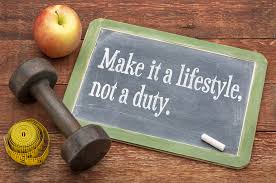What if I told you I had a magic bullet, one that might cure obesity and cardiovascular disease? Would you want to know what it is?
Listen close, and I’ll tell you:
The magic bullet is exercise. And we’re not talking running a marathon or spending hours at the gym. A brisk 20-minute walk each day reduces the risk of coronary disease by 30 to 40 percent. Just 20 minutes!
In the article “Regular Physical Activity: A’Magic Bullet’ for the Pandemics of Obesity and Cardiovascular Disease,” professors from Florida Atlantic University have concluded that regular physical activity is the closest thing to a magic bullet to combat the epidemic of obesity and cardiovascular disease.
Here’s the crazy thing though: Only 20 percent of Americans meet the recommended levels of regular physical activity and about 64 percent don’t engage in any physical activity.
“If regular physical activity were a pill, then perhaps more people would take it,” wrote the article’s co-author, Dr. Charles H. Hennekens.
So why don’t people exercise more regularly?
Two main reasons were suggested:
1) Time and effort needed for regular physical activity
2) Limited knowledge about the immediate and long-term benefits of regular exercise
For years, we’ve been sold diets. So much so that “there are a lot of misperceptions about the role of regular physical activity, caloric intake and calories burned during exercise,” wrote co-author Steven Lewis. “And, as a result, dieting has been recommended as more practical for weight control than regular physical activity, and this is a big problem.“
If the goal is to simply lose weight, diet only may get you there, but it’s tough to maintain progress. Exercise is key. With physical activity, you gain lean muscle mass, which increases your body’s metabolism and resting calorie burn, which help in achieving and maintaining weight-loss goals. Ideally, regular physical activity would include cardio as well as resistance training, such as lifting weights.
The benefits of resistance training include the prevention or limitation of age-related sarcopenia, improved maintenance of muscle-mass strength and a decreased risk of osteoporosis-related bone fractures, falls, physical disability and mortality.
The bottom line: Cardiovascular disease is now the leading killer worldwide. The article cites that the lack of physical activity accounts for 22 percent of coronary heart disease, 22 percent of colon cancer, 18 percent of osteoporotic fractures, 12 percent of diabetes and hypertension and 5 percent of breast cancer cases. Furthermore, physical inactivity accounts for approximately 2.4 percent of U.S. health-care expenditures, or approximately $24 billion a year.
While awareness and support to fight diseases increase, the lack of sufficient physical activity by 80 percent of the population goes fairly unnoticed.
Support from both corporations and society is critical to building awareness. Companies need to offer their employees incentives and opportunities to incorporate physical activity in their daily lifestyle. Society must embrace physical activity to the point where it becomes the norm.
How will you find twenty extra minutes to move your body today?










